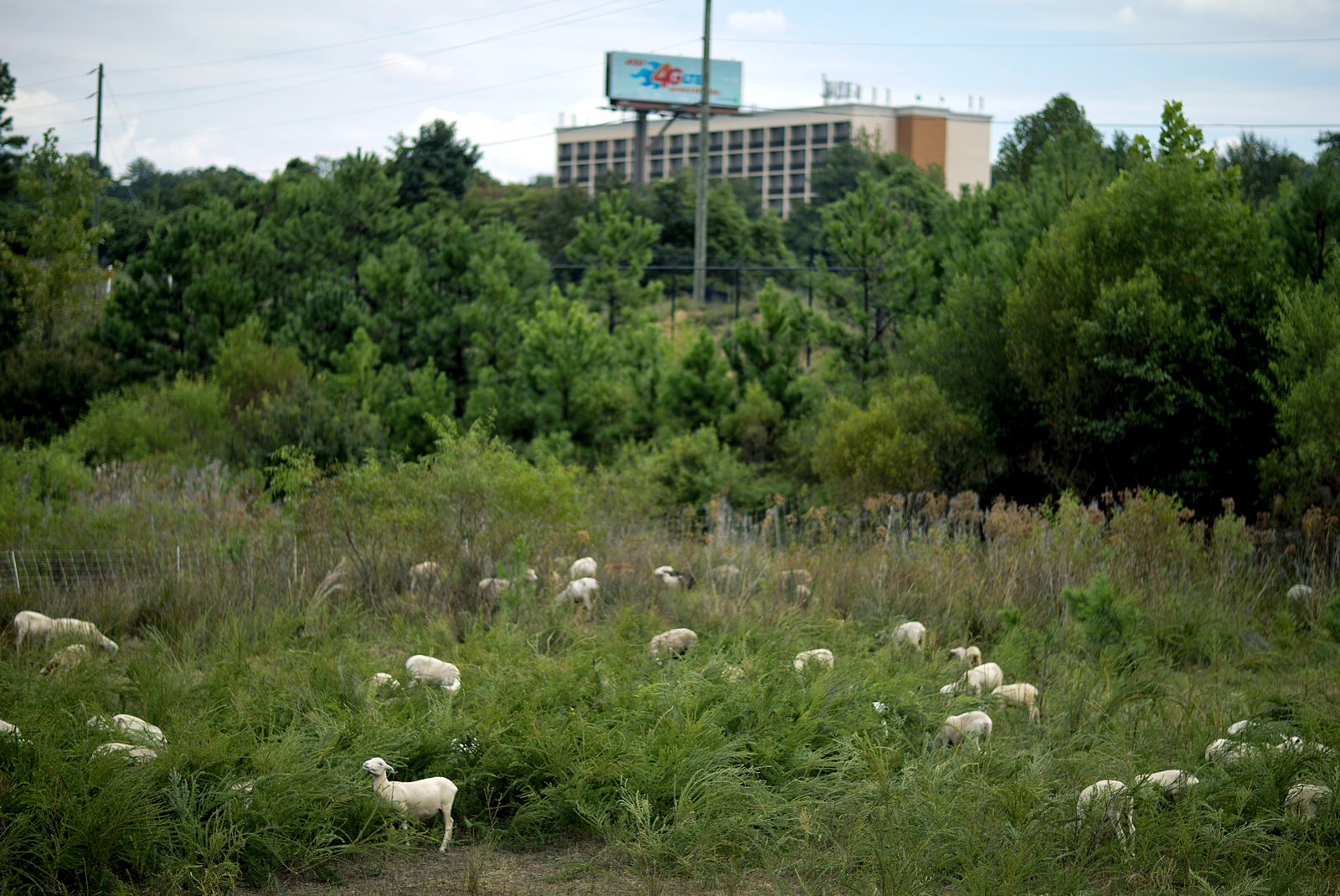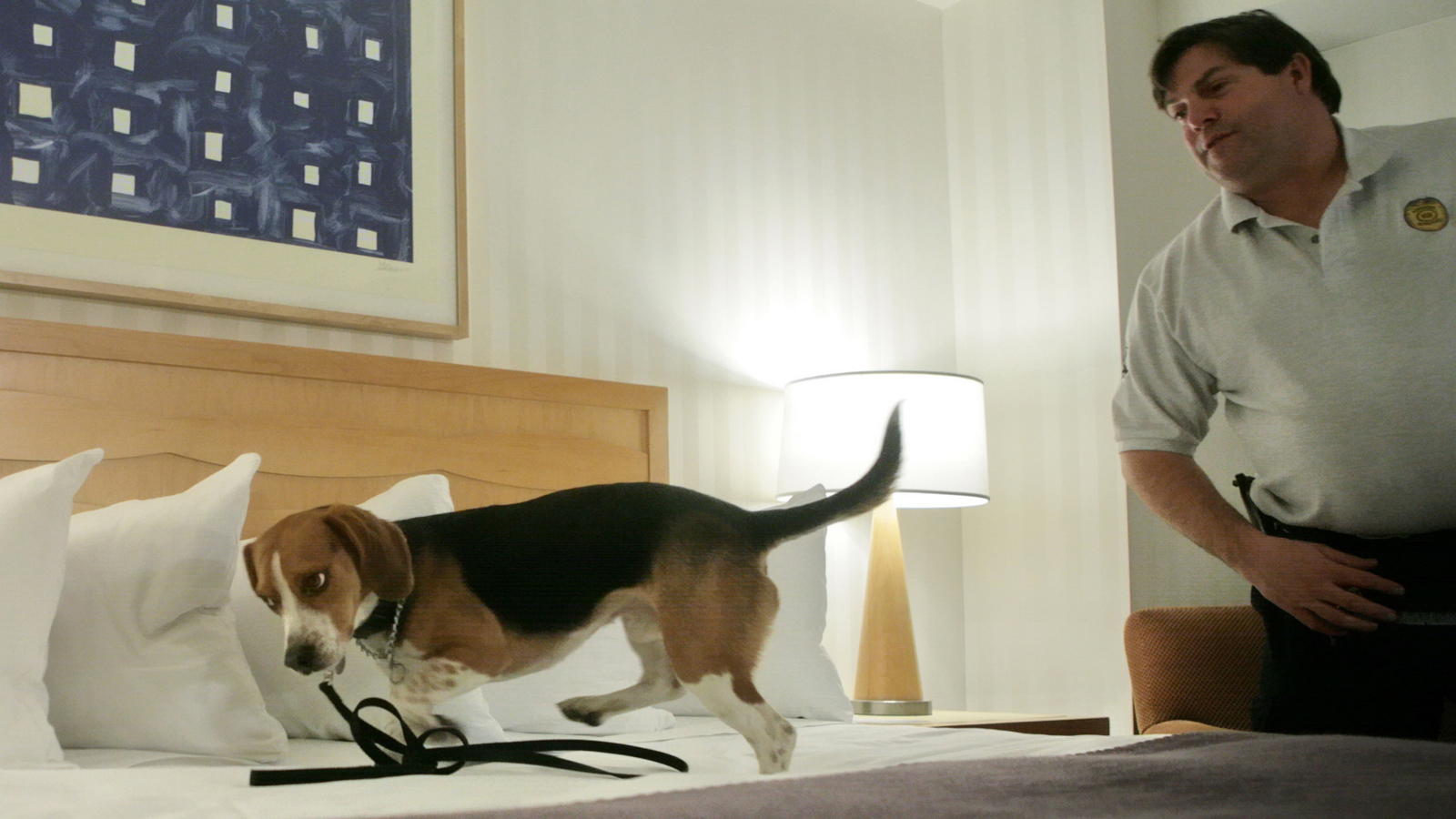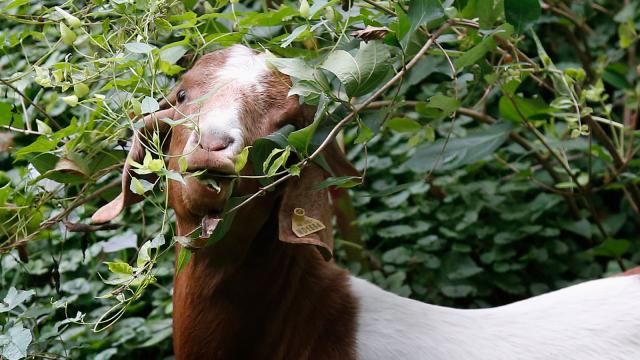Between the Great Recession and federal Sequestration cuts, officials at all levels of government are scrambling to scrimp and save money anywhere they can, no matter how offbeat the method. Even if it means foregoing the latest technological solutions for a more traditional, holistic approach — like exploiting the superhuman sensory abilities of animals.
Across the US, airports and government organisations are working with ecologists to leverage the talents of animals and insects. From bees to beagles, check out some of the most interesting examples below.

Goats: Nature’s Perfect Lawnmower
With a shared history dating back 10,000 years to the Neolithic era, goats are among humanity’s earliest domesticated animals. And while we traditionally raised them for milk, meat, and dung (as a fuel source), the relationship has changed since the start of the 21st century. Goats are no longer just devil-eyed eating machines, they’re pets. And also devil-eyed eating machines that can clear brush and weeds where modern machinery fears to tread, as administrators at Chicago’s O’Hare Airport have discovered. It is, as Brian Knox, president of Sustainable Resource Management, told the Chicago Tribune, “a rediscovery of what people have been doing around the world for thousands of years.”
Since airports and tall buildings don’t mix, much of the acres of land around these municipal transportation hubs remain undeveloped and choked with weeds. The conventional method of clearing these fields involves hours of riding tractor mowers and applying noxious herbicides to areas too steep, narrow, or otherwise inaccessible to the machines. This requires lots of fuel, manpower, and money — not to mention the danger of watershed pollution caused by the herbicidal runoff.
So instead, airports around the country — including San Francisco International (SFO) and Chicago O’Hare International Airport — are turning to goats as a cost-effective, environmentally responsible means of controlling weed growth on public lands. And it’s working.
Here’s why it makes sense. Goats are inexpensive, easy to handle, and love poisonous and prickly plants like Hemlock, Poison Oak, Pampas Grass, blackberry bushes, blooming Yellow Star Thistle, and Mustard. They browse (that is, they eat everything at eye level — the opposite of what ground-level grazers like cattle and sheep do) year round — pretty much non-stop except to sleep — and can consume up to a quarter of their own body weight daily. What’s more, they help improve the quality of the land for grazing animals by aerating the soil and chomping non-grassy plants (70 per cent of their diet is woody plant matter).
At O’Hare, a herd of 25 goats has been hard at work munching through acres of overgrowth to the northeast of the main terminal, especially in the more rugged embankments. “The embankments cause wear and tear on our machinery and are difficult for our team members to reach,” Aviation Commissioner Rosemarie Andolino told the Chicago Tribune. “It’s not like mowing your lawn. We’re utilising natural resources more efficiently.”
That goes for the goat’s bodyguards as well. There will be a shepherd and electrified enclosures to help guide the herd. And soon, the goats will be joined by a few llamas and wild burros as well. What fate will coyotes brazen enough to attack an O’Hare goat suffer? “The wild burros chase them and stomp them to death,” said Pinky Janota, who donated some of the animals, to the Tribune.
For just $US19,500, these goats will clear more than 120 acres of land over the course of a few weeks. It may not be as fast as running a mower over it and applying herbicides, but the environmental savings quickly add up. The airport is, as Andolino quipped, “putting the best product with a difficult terrain.”
Airports aren’t the only beneficiaries of these uncanny ungulates. Haverford College, Boulder, Colorado, and Sandy Hook, New Jersey all employ herds to battle invasive and poisonous plants like poison oak and chicory. Forestry services around the country use them to chow down on dry brush prior to fire season, too.
“We’re seeing them more and more as a relatively inexpensive way to clear these areas,” says Knox. “Goats will eat a majority of the real problems that people run into.”

Bees: Sniffing Out Bombs
It’s no secret that a dog’s olfactory acuity is leagues beyond our own but few people realise that a honeybee’s scent sensors are just as powerful. In fact, they’re so good that DARPA once attempted to train them as explosive detectors. Dubbed the “Stealthy Insect Sensor Project,” this test aimed to exploit the North American honeybee’s ability to detect airborne molecules in the parts-per-trillion range (three times better than a shark’s ability to detect blood in seawater).
Normally, bees use their delicate antennae to hone in on flowers by following scent trails on the winds in order to collect pollen for the hive. But beginning in 1999, DARPA researchers have trained bees to follow the scent of explosives like TNT, C-4, and rocket propellants, instead. Much like Pavlov’s dog, researchers conditioned the bees to stick out their proboscises for a sugar water treat every time they smelled explosives.
Once trained, the individual drones are installed into a buzzing detection array. By pointing the array in various directions and employing a motion-tracking system to monitor which bees are sticking their proboscises out, the researchers can effectively follow a chemical trail. The stronger the trail, the more bees will simultaneously waggle their tongues. Researchers hope to eventually install these systems in train stations and airports to continually monitor for contraband.

Of course, bomb sniffing bees are only viable assuming we have any bees left in the future. To combat C0lony Collapse Disorder, many public sector institutions are installing beehives, including Seattle-Tacoma Airport (Sea-Tac).
The airport, operated by the Port of Seattle, recently adopted half a million honeybees — six hives worth — and situated them on three vacant, restricted-access sites around the runway. Port officials, along with nonprofit partner The Common Acre, hope that doing so will boost genetic diversity (which will counter viral outbreaks) and help stabilise the region’s apiary population by artificially selecting the strongest queens to repopulate the rest of Western Washington.
“Bees are a critical part of the food chain and connect with our goal of growing sustainably and increasing the economic contributions of the port while reducing our environmental footprint,” Port of Seattle Commissioner Bill Bryant said in a news release. Sea-Tac’s burgeoning bee keeping endeavours follow O’Hare’s 1.5 million-bee lead from 2011.
And it’s not just bees. A huge variety of insects can benefit from dedicated natural areas around airports. A 2010 study published in the Journal of Insect Conservation revealed that the 305 hectares of grassland surrounding JFK International Airport in NYC was home to 125 separate families of insect:
“Our results suggest the JFKIA airfield represents a large, semi-natural grassland area that has the ability to support diverse and dynamic populations of terrestrial arthropods, although the airfield is isolated from other semi-natural grassland habitats by marine and urban environments…These anthropogenically influenced grassland habitats are unique within this highly urbanized landscape which might serve as a refugium for grassland insects that require these habitats to persist. Consequently, such areas might have significant value for the conservation of terrestrial arthropods within urban areas.”
Of course, the dominant form of grassland in the five boroughs is manicured turf, not semi-wild grass.

Red Worms: Recycling Airport Trash
Airports generate tons of garbage on the daily, most of which ends up in local landfills. Not so at Charlotte Douglas International in North Carolina, where refuse winds up in the belly of worms.
Travellers passing through Charlotte Douglas leave about a half pound of garbage behind per person — that’s 25 tons a day in total. This trash is first collected and sent to a 30,000-square foot recycling center previously used to prepare airline food. The waste is sorted by a team of human workers: recyclables are removed, baled, and sold; clothing (usually left behind by passengers facing bag weight restrictions) is sorted, laundered, and donated; and any leftover food or paper waste is deposited into a 1,600-square foot pre-composter.
The organic matter settles in the composter tub for a few days before being transferred to a 50-foot long, 8,000-square foot bin filled with 300 pounds of worms — which amounts to roughly “1.9 million of them,” as Charlotte Airport housekeeping manager Bob Lucas told NPR. The worms work their way vertically up through the compost, eating half their weight daily and leaving layers of valuable, nutrient-packed casings behind. These “black gold” casings are then used as a fertiliser for the airport’s 6,000 acres of land, with any leftovers bringing in a tidy sum. The $US1.2 million pilot program will pay for itself within the next five years and start making real money for the airport after that, not to mention saving Charlotte Douglas $US1 million in waste disposal fees over the same period.

Dogs: Detecting Bed Bugs
A dog’s nose is rarely wrong. That’s why man’s best friend has long worked alongside us, lending their super-human sense of smell. Dogs have been trained to sniff out everything from human remains, drugs, and explosives to currency, produce, and the polycarbonate in pirated DVDs — even cancer.
But perhaps their single most important role has been helping in the battle against bed bugs. These minuscule biting insects have taken over NYC in the last few years — it’s gotten so bad that even the Department of Health itself has been infested — and are rapidly spreading throughout the country. Adult bed bugs are barely visible, and they’re highly adept at hiding in crevices and wall voids inaccessible to humans. But no matter how stealthy, they can’t hide from a dog’s nose.
In fact, a 2008 clinical study conducted by the University of Florida, Gainesville, rated a properly trained dog’s detection efficiency in the 95 to 98 per cent range. This extremely high level of accuracy allows health inspectors an alternative to ordering a building-wide tenting. Instead, as was the case when the Goodwill experienced an outbreak in Alemeda, CA recently, dogs can be employed to pinpoint the exact location of infestation for localised gassing.
The system is not perfect, mind you — the dogs must be properly trained and continually practiced to maintain their accuracy. And, unfortunately, the recent East Coast outbreak has caused such a demand for sniffer dogs that many fly-by-night operations are popping up along the Atlantic seaboard.
Whether they’re sniffing out terrorist attacks or hotel vermin, chowing through our garbage or noxious weeds, animals remain a vital part of our workforce. Just as they have been for thousands of years past. [Chicago Tribune – Detroit Free Press – Goats Eat Weeds – KHOU – MNN – Wikipedia – How Stuff Works – Seattle Pi – Conservation Maven – Inhabitat – CBC – NPR – GoGreen – Charlotte Observer – Wikipedia – NYT]
Pictures: AP Images
